Land Girls: the History of the Women’s Land Army
The Women’s Land Army (WLA) was founded in 1917 to help farmers cope with the shortage of male labour that resulted from the First World War, by recruiting women to work the land. Its members were affectionately known as the Land Girls.
Sceptics did not believe that women would be suited to the hard labour that farm work required. But the Land Girls played a critical role in supporting the country’s food production during the First World War. The organisation was re-established in the Second World War, and by 1943 its members produced the vast majority of Britain’s wartime food, happily proving their critics wrong.
This online exhibition, created in 2020 to mark the 75th anniversary of Victory in Europe, looks at the history of the Women’s Land Army and the vital role the Land Girls played in growing food and sustaining agriculture across the country.
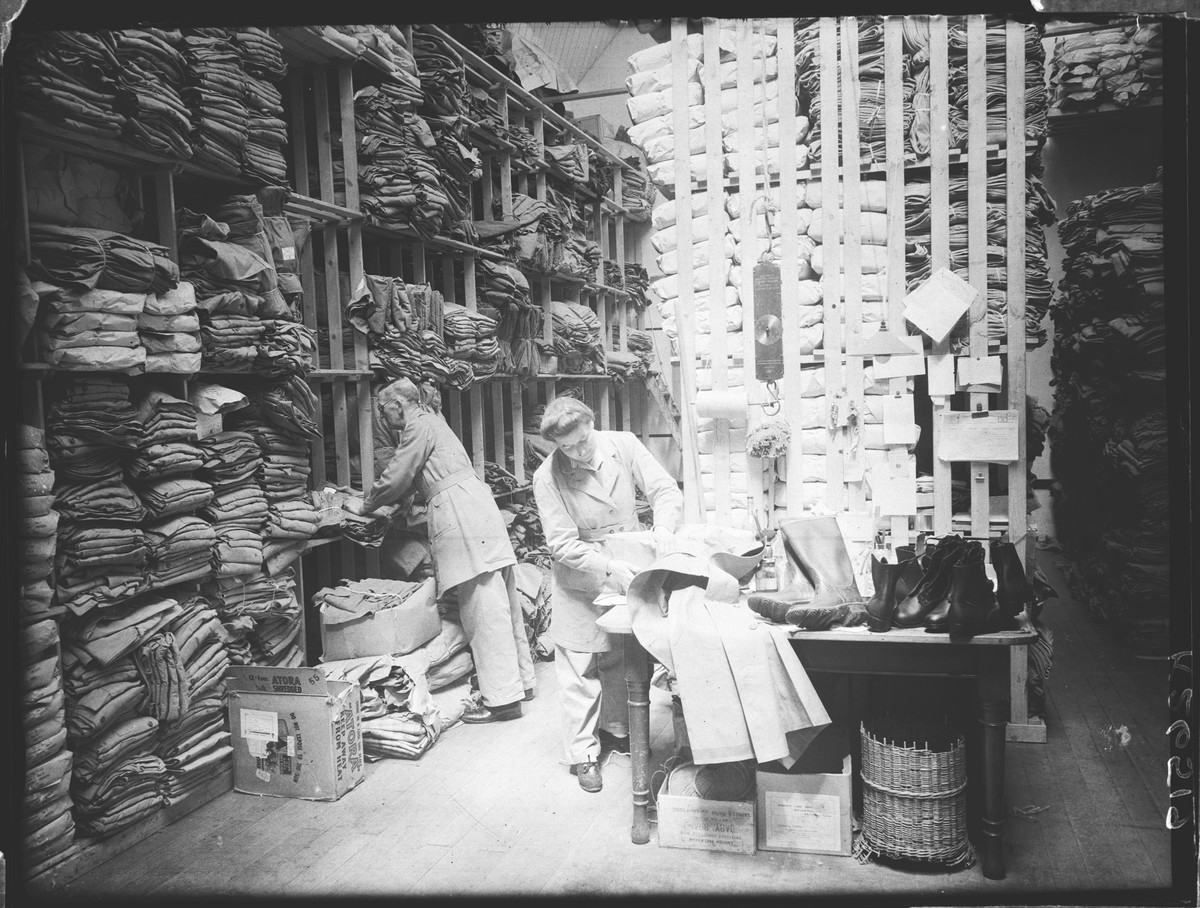
When was the Women's Land Army formed?
The Women’s Land Army in Britain was first formed in 1917, towards the end of the First World War. Recruits worked in agriculture, filling gaps left by men fighting on the front.
Much earlier in the Second World War, in 1938 the WLA was reformed under the stewardship of Lady Gertrude Denman.
Between June 1939 and November 1950, over 200,000 women took up the challenge and enlisted.
The Squash court at Balcombe Place, Sussex, was used as a Women’s Land Army uniform store. That’s a lot of folding! (P FS PH1_K26519).

The Women's Land Army's mission
‘The Land Army fights in the fields. It is in the fields of Britain that the most critical battle of the present war may well be fought and won’.
Lady Gertrude Denman, Director of the WLA
Here, Women’s Land Army members work with Red Standard wheat on a farm belonging to the Kent War Agricultural Executive Committee. This process is named stooking: arranging sheaves of wheat into stooks. (P FS PH1_K28879).
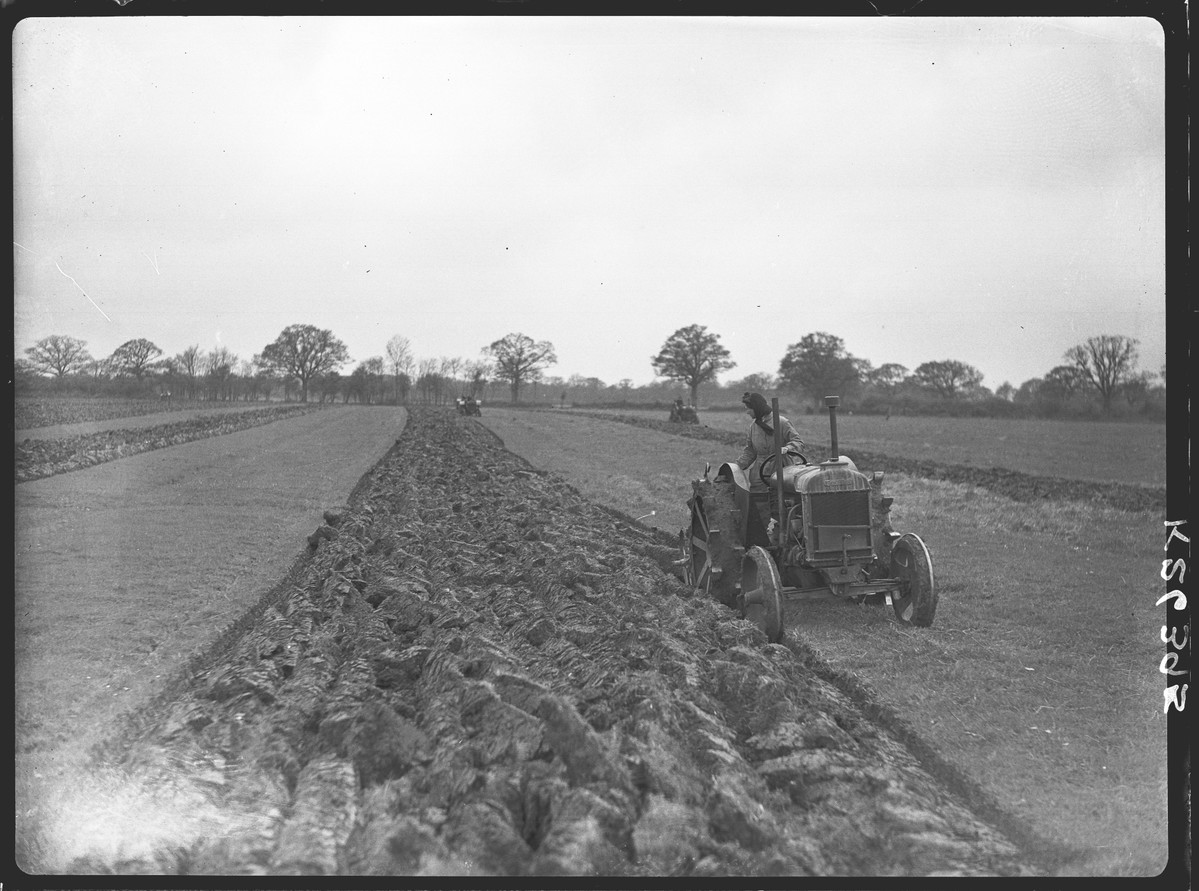
Women’s work and the 'Cinderella Service'
Major concerns were raised by contemporary writers during about the lack of recognition and funding given to the members of the Women’s Land Army, the Land Girls. There was a significant pay discrepancy between male and female workers, with women earning an average of 28 shillings per week, whilst men took home closer to 38.
The 20th April 1942 marked the first time that the Women’s Land Army was referred to as the ‘Cinderella Service’, in a radio broadcast by Clemence Dane (pseudonym of writer and novelist Winifred Ashton). It was a vital organisation that was being overlooked and forgotten about.
It was not only issues of gender that impacted upon the workers of the Women’s Land Army, but also race. The story of Amelia King, a woman of colour who applied to join the Women’s Land Army in 1943 but was turned away due to the colour of her skin, became a national scandal.
In this photo, a Women’s Land Army member ploughs heavy grassland at a farm owned by the Buckinghamshire War Agricultural Executive Committee, Oakley. (P FS PH1_K26395)
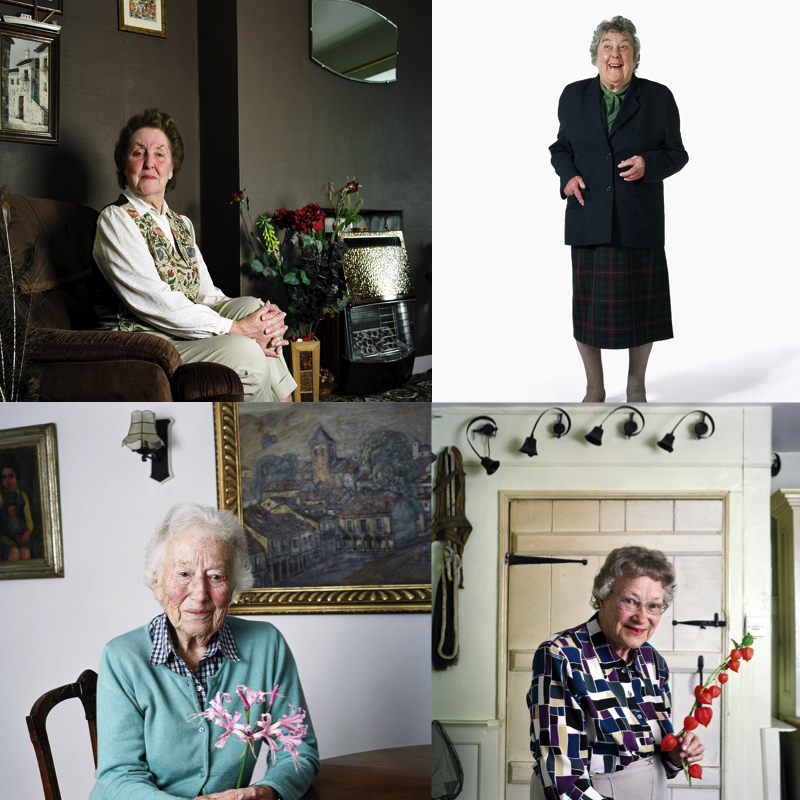
Contemporary portraits
In 2005, to mark the 60th anniversary of the end of the Second World War, we commissioned photographer Rory Carnegie to create contemporary portraits of members of the Women’s Land Army.
Around the same time, we were developing our collection of artefacts, images and archives related to the Women’s Land Army and the remarkable stories of its Land Girls.
Mrs Macleod (top left), Miss Kift (top right), Miss Dottridge (bottom left), Mrs Stone (bottom right).
(c) Rory Carnegie
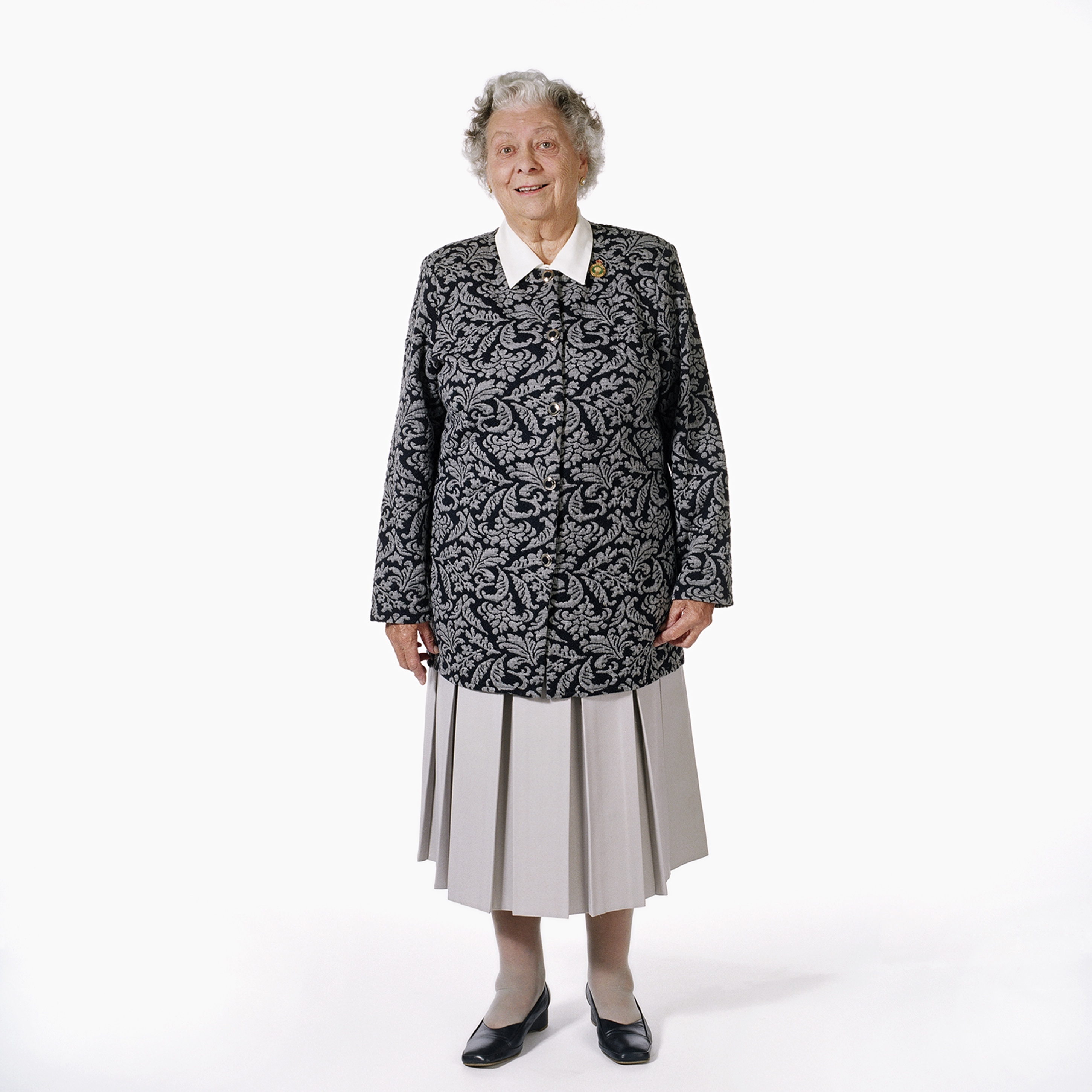
Mrs Hannington
‘When I got to the farm, there was a chap there with three weeks’ growth of beard, a very elderly man with him, and they were repairing a tractor. And the farmer said: ‘Beggared, y’see Ralph. This is the young lady that’s come to ‘elp us on the farm’. And Ralph was his son and this other chap, he doubled up and laughed, ‘Ha ha ha’. You know, really outlandish, outrageous really’.
Mrs Hannington
(c) Rory Carnegie
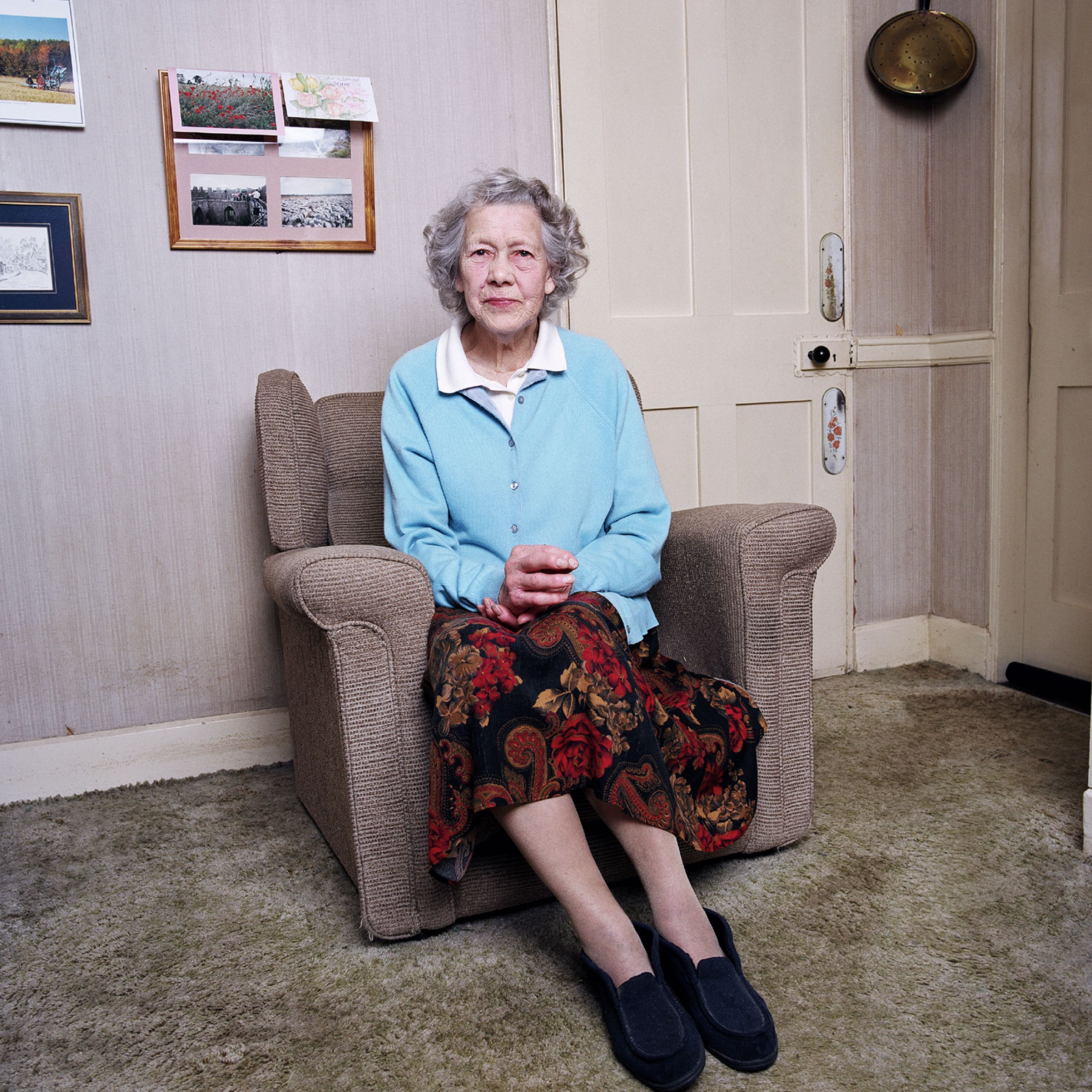
Mrs Shanks
‘…I think it was when we became nineteen, that was the age that we always had to do something. I was going to join the Air Force because I thought the uniform looked nice, you see. But I didn’t have any choice. My father and the farmer he worked for wanted a Land Girl to replace the farm chappie who was going off to the army’.
Mrs Shanks
(c) Rory Carnegie
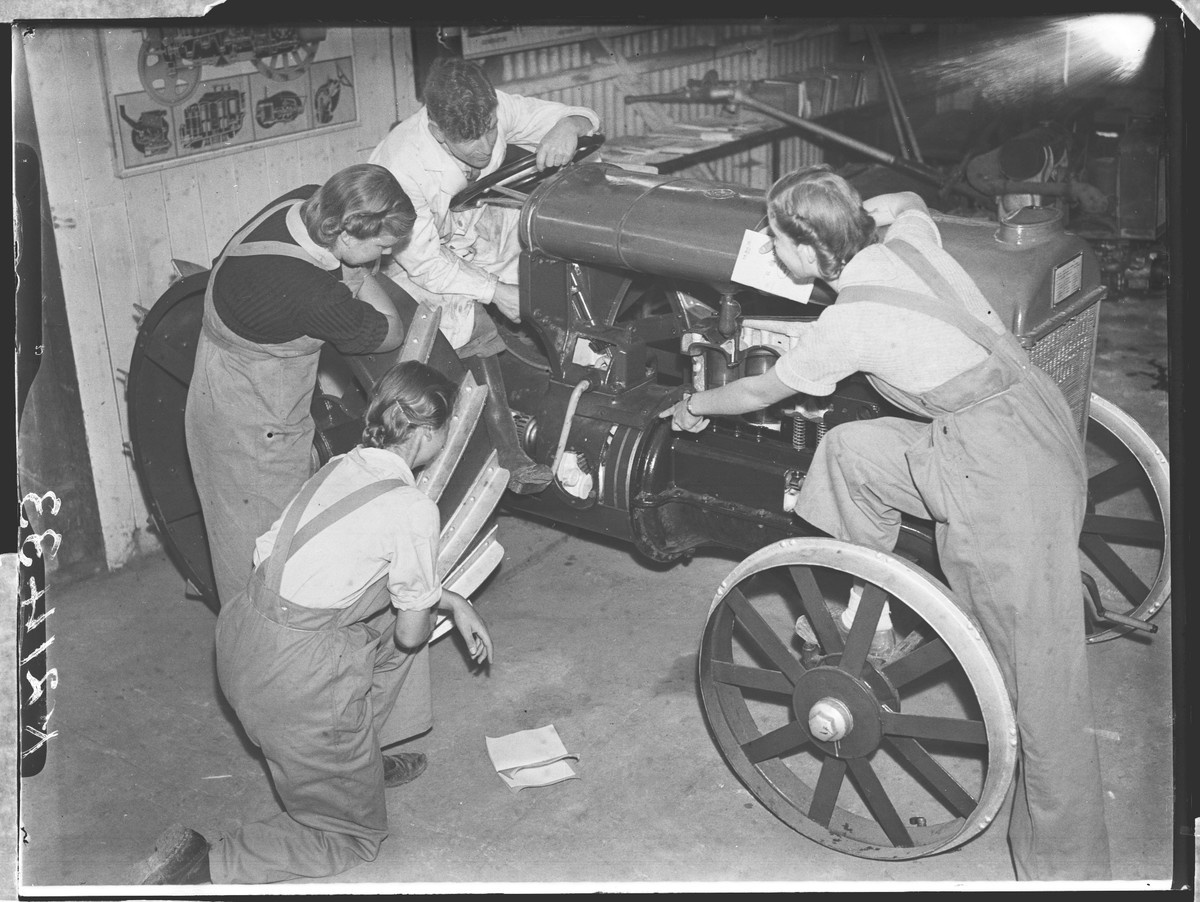
The lives of the Land Girls
Land Girls were deployed across the country. They worked on land reclamation in the Fenlands, and as Lumber Jills in the Timber Corps. Some worked alongside prisoners of war, and others volunteered bringing in the harvests. Their lives and work is recorded in their monthly journal, The Land Girl, which featured a wide range of materials: from stories, to tips (such as how to disable a tractor in the event of an invasion).
Here, Women’s Land Army tractor mechanics train at Wye College, Kent. Presumably, all would become deft hands at fixing and disabling tractors! (P FS PH1_K21433)
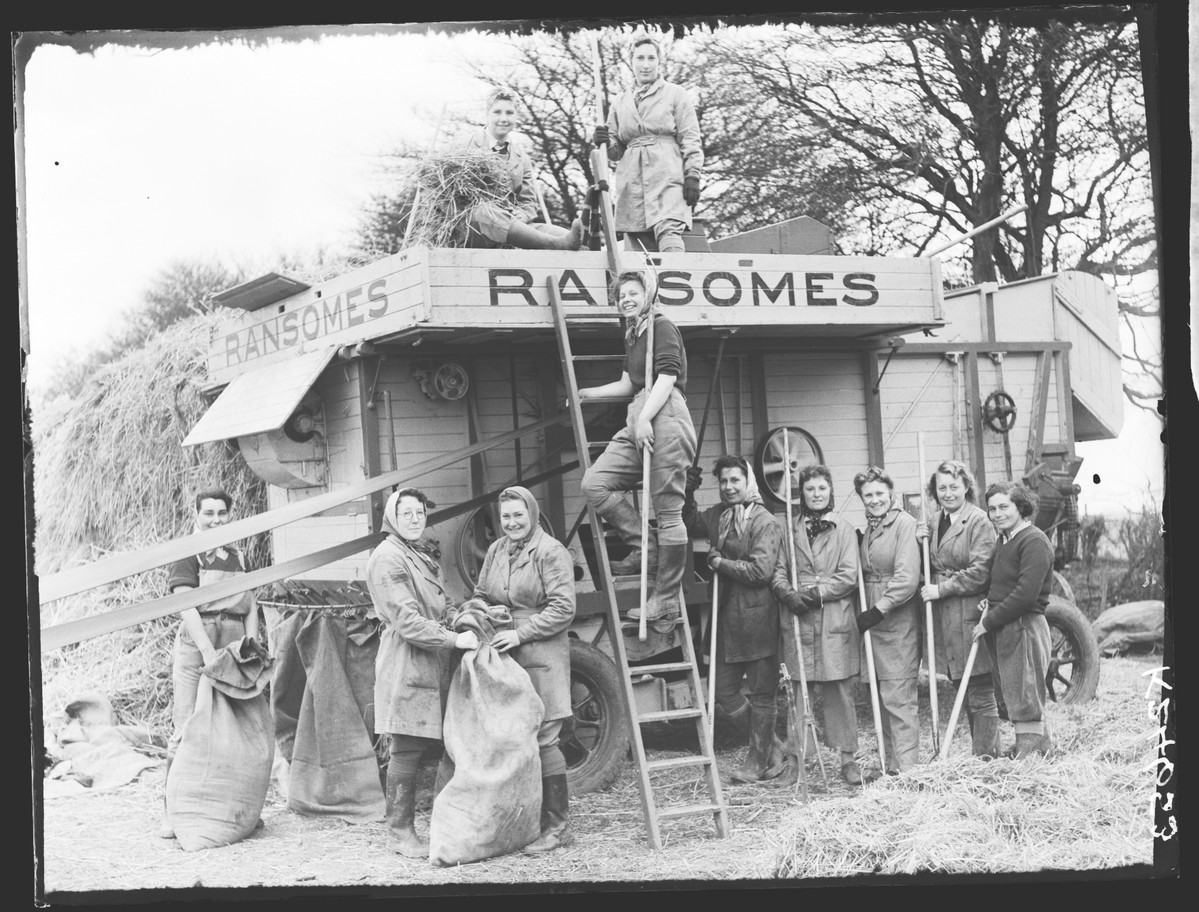
Recognition
When a woman left the Women’s Land Army, following the end of the war, she received:
- Her last week’s pay
- A letter from the Queen as thanks for their efforts
- Sometimes money from the Land Army Benevolent Fund (most of this money came from the Land Girls themselves)
- A greatcoat, but only if dyed blue
- An armband (as featured in our International Women’s Day Blog from 2015)
- Twenty clothing coupons in return for their uniform
However, there were always ways that the Land Girls were not sufficiently rewarded. In February 1945, Lady Denman, the Director of the Women’s Land Army, resigned in protest against the Government’s decision to exclude its members from post-war financial benefits. It was yet more proof of the organisation’s treatment as a Cinderella Service.
A Women’s Land Army threshing team in Kent smile for the camera! (P FS PH1_K24653)
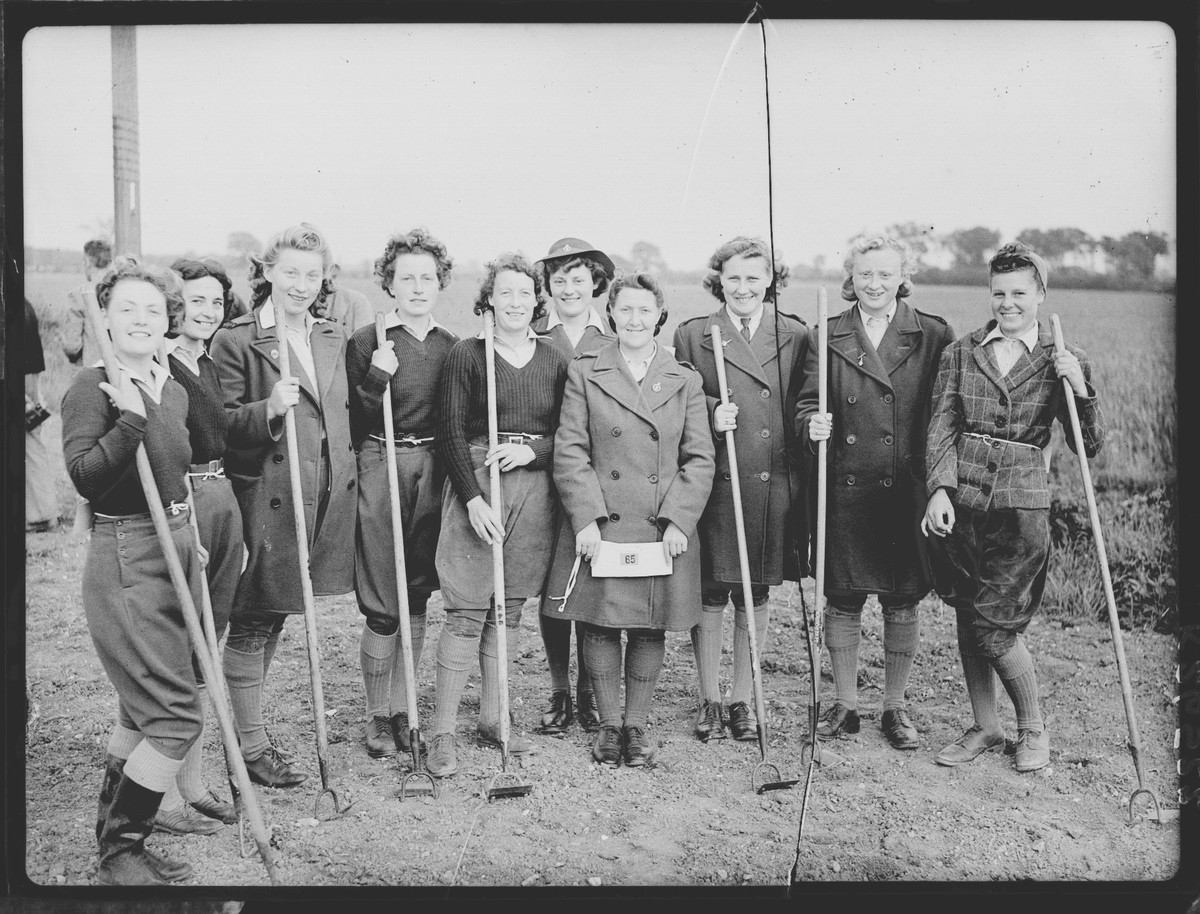
Remembrance
From 2000 until 2012, the Women’s Land Army were invited to march past the Cenotaph on Remembrance Day.
Following important campaigning, it was announced in December 2007 that surviving Land Girls would receive a special veteran’s badge. These badges have been awarded since July 2008.
In October 2014, HRH the Countess of Wessex unveiled a memorial to the Women’s Land Army and Women’s Timber Corps at the National Memorial Arboretum.
This photograph was taken at a contest held for Land Girls: the Women’s Land Army Beet Singling Competition, in Braintree, Essex. (P FS PH1_K26522)
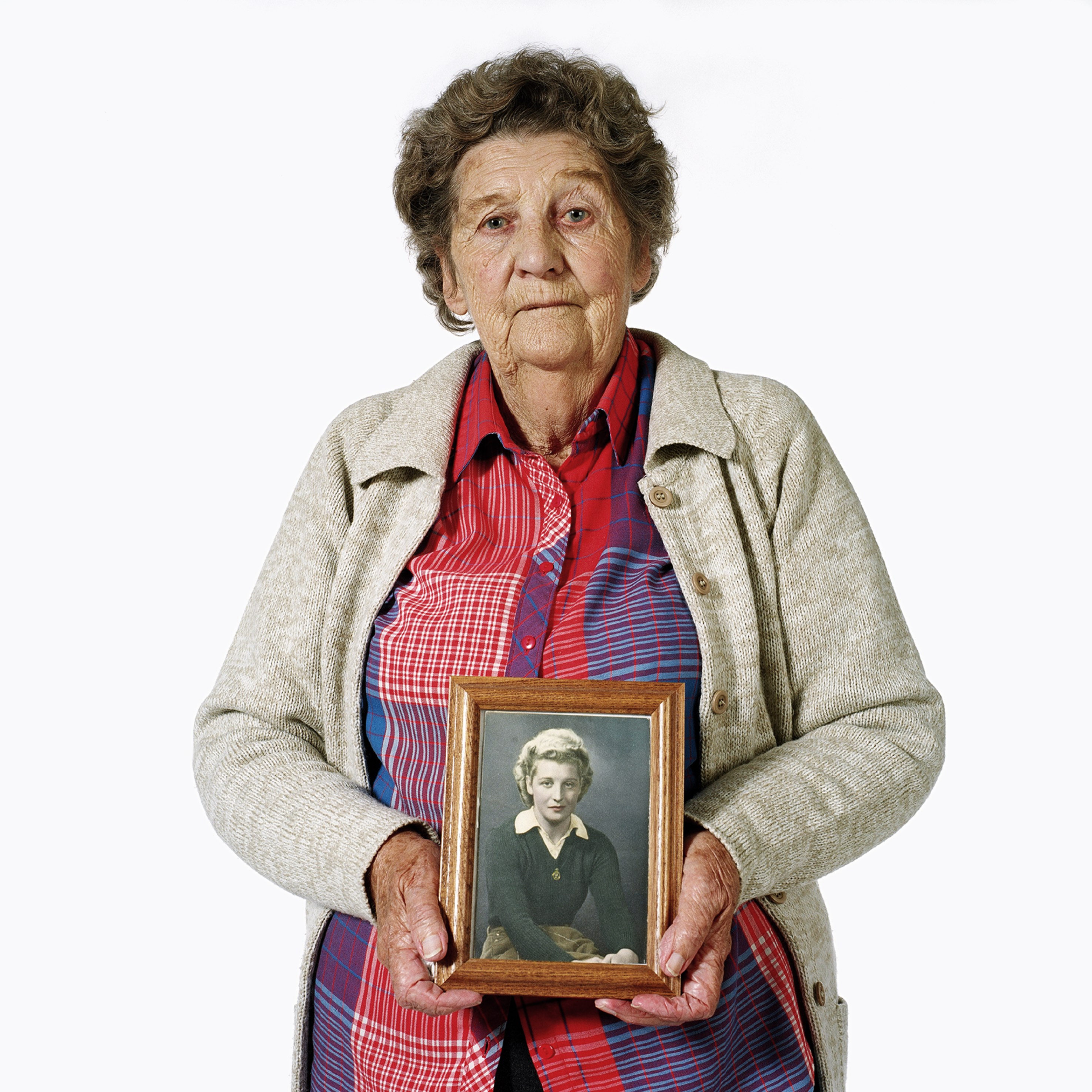
Mrs Simpson
‘I had that [photograph] done privately. I think it was for my 21st birthday, as I was away from home and it was to send home to my parents. I did the forestry at first and it must have been a year or more, because I can remember all the different weathers because in the winter it was pretty ghastly. Some days you were sat in there chattering and playing cards. Not very often though. They used to turf you out!’
Mrs Simpson
(c) Rory Carnegie

Mrs Armstrong
‘I went home every month. I met a young man with a motorbike and we went home by motorbike. It’s a long way from Chippenham on […] a motorbike, and when we got near London, I remember we went round a corner and the bike slipped and we both came off. I always put my uniform on to go home because you could get lifts easier, and my bottom was quite wet!’
Mrs Armstrong
(c) Rory Carnegie
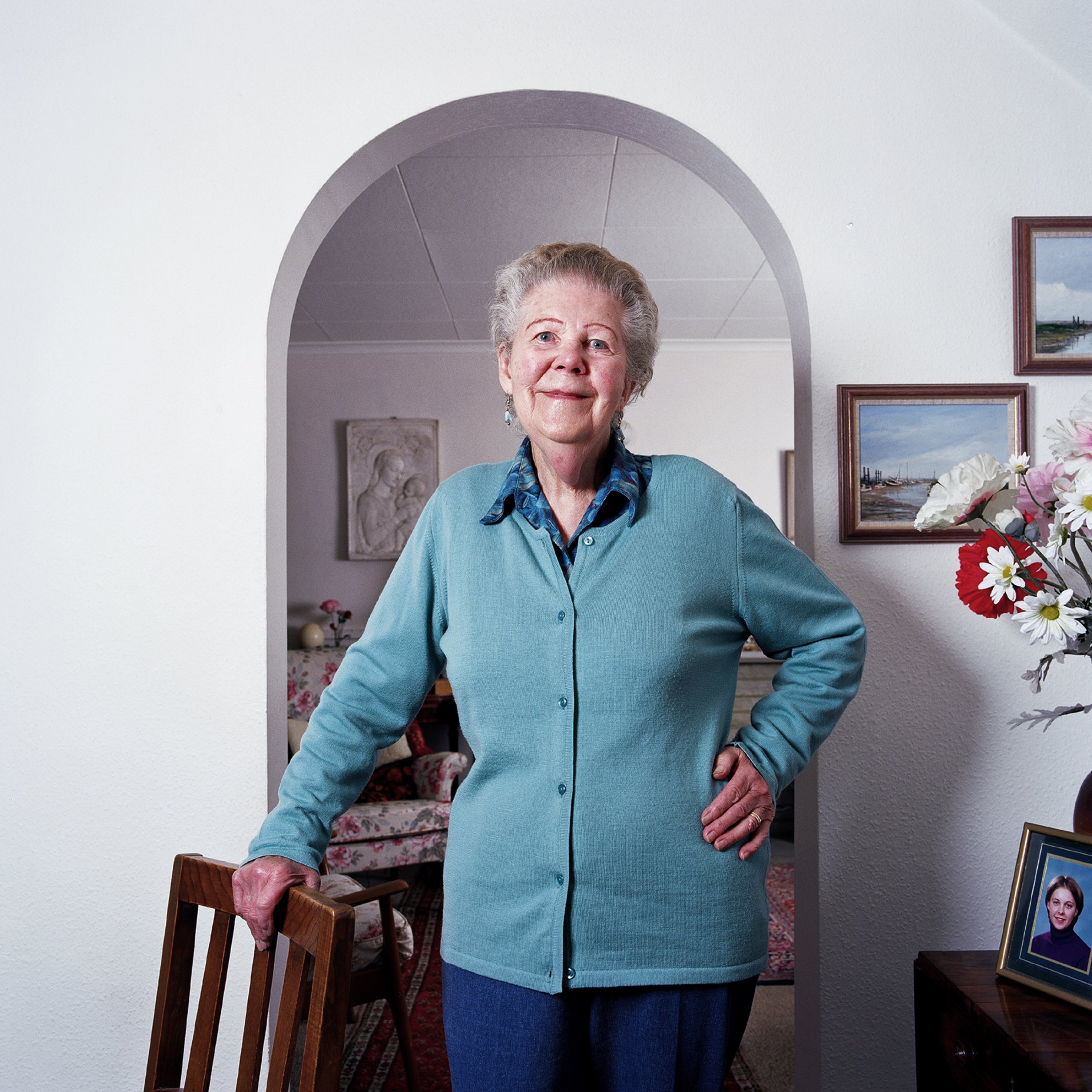
Mrs Aldiss
‘When I first left the University of Reading it was the beginning of the war. I went along to the recruiting office and they said that I was already trained. I had been doing the diploma course in dairy, and so, I knew how to milk. I never was actually in the Land Army. I trained Land Army girls from about 1943. I worked on farms myself’.
Mrs Aldiss
(c) Rory Carnegie
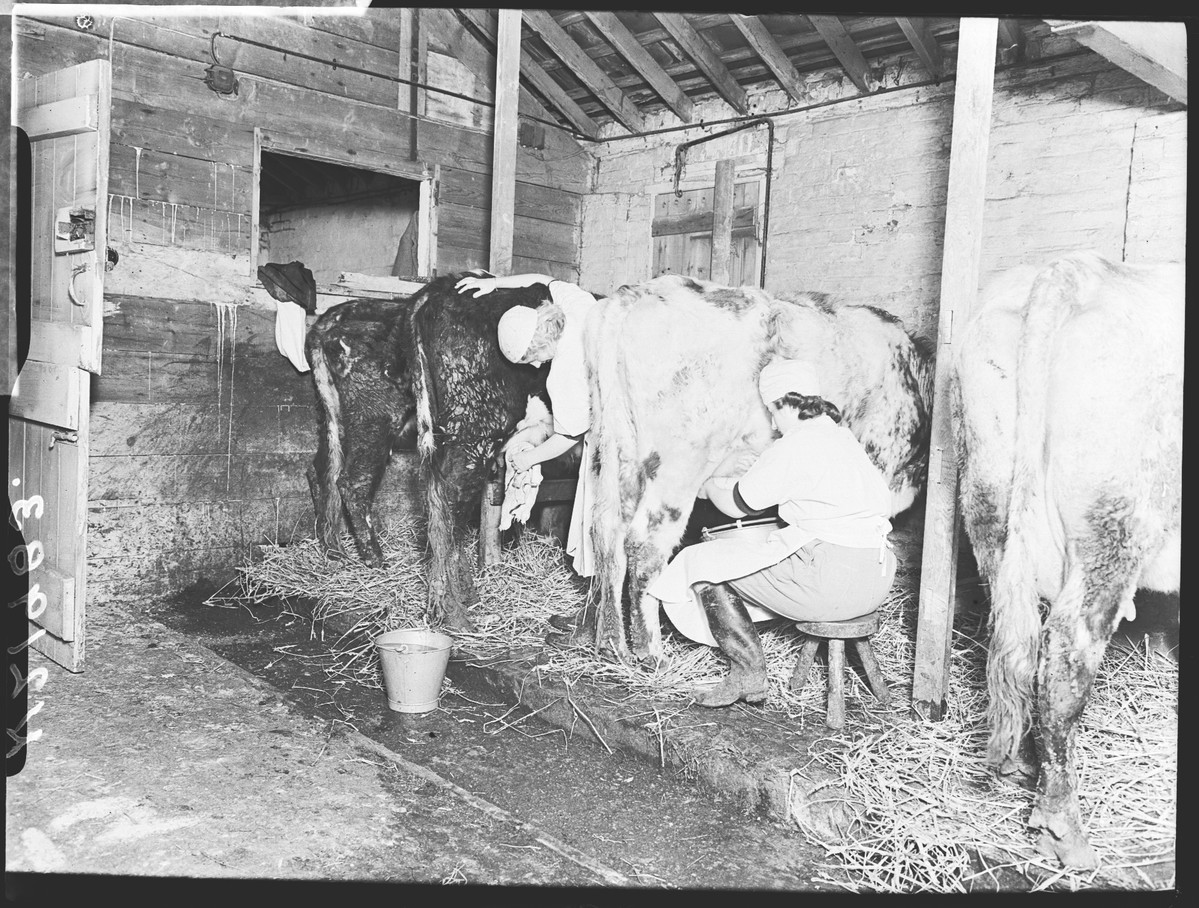
'The biggest cow I'd ever seen'
‘The first afternoon, about 3 o’clock […] I had to sit under the biggest cow I’d ever seen. Her name was ‘Roughy’ because she was very, very dark brown and had ever such a curly coat. Well, I struggled for three milkings to try and get the knack, which I couldn’t. It would have been easier if I’d sat still and the cow jumped up and down, you know?’
Mrs Hannington.
In this image, members of the Women’s Land Army milk the cows at Carpenders Park Farm, Hertfordshire. (P FS PH1_K21983)
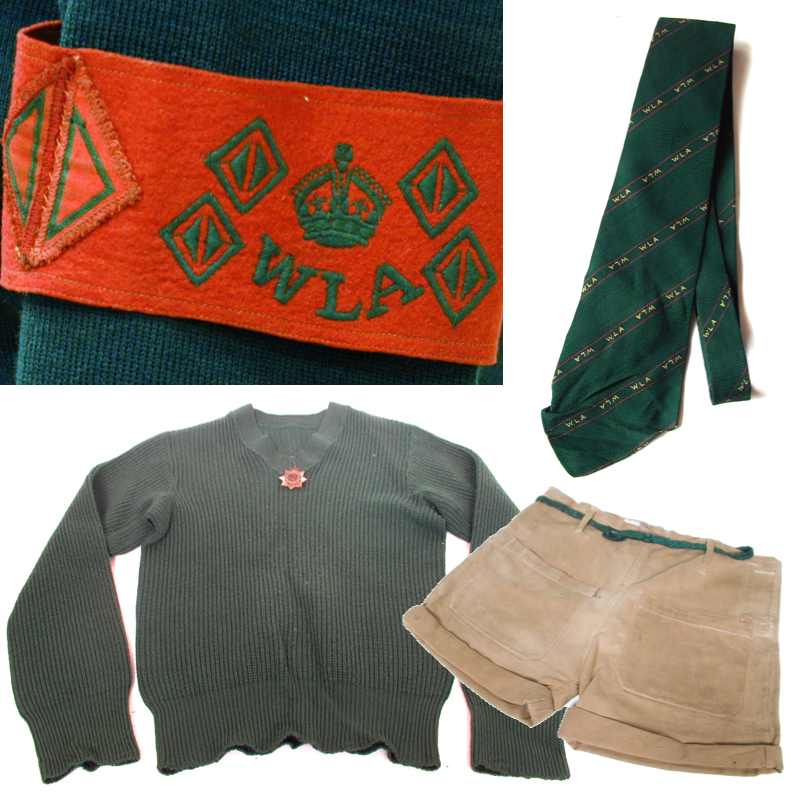
Selected items of uniform
In our collection we have several pieces of Women’s Land Army uniforms donated by former Land Girls.
This armband belonged to Doreen Thorp (MERL 88/62). Another Land Girl, Lucy Shanks, explained to us the significance of the decoration:
‘When one first joined the Land Army, you were given a plain armband. But the longer you served, the bands became more decorated. We were issued with the half-diamonds after every six months on the land. The County Secretary suggested sewing them on to the armbands, but I seem to remember we made a wider band that we wore on our greatcoat sleeve as a sort of status symbol’.
The tie belonged to Miss P Genever who served in the WLA from 1942-50 (MERL 96/75). Lucy Shanks said: ‘The tie was not standard issue but was brought out by Tootal [a firm] and we liked to wear it as we felt it brightened up our shirts’.
The jumper belonged to Margaret Edmunds, nee Roberts, as did the proficiency badge adorned to it. Margaret worked at Windsor Great Park on food provisions that were sent to hospitals and nursing homes (MERL 2003/1).
Lastly, the shorts belonged to Doreen Thorp, who made them by cutting down standard issue dungarees. Although they were not strictly part of the authorised Women’s Land Army uniform, shorts were quite popular and worn in hot weather (MERL 88/50/1).
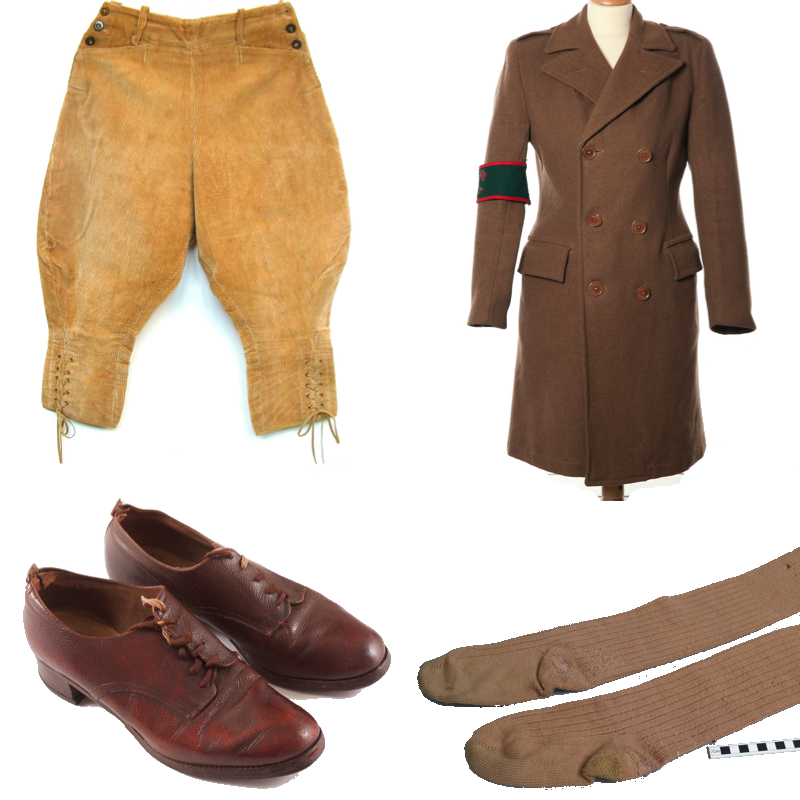
Selected items of uniform
The brown corduroy breeches belonged to Beatrice Clasper. Manufactured by Sternberg and Sons Ltd, they are perhaps the most recognisable of the Land Army’s clothing (MERL 95/4).
The regulation coat and Women’s Land Army armband belonged to Doreen Thorp. She joined the WLA in September 1939. By October, she started training at the Midland Agricultural College in poultry, stock and general farm work (MERL 88/44/1-2).
The socks and shoes belonged to Gwendoline Hayes. Gwendoline enrolled in November 1941 and left in March 1946. She was trained in market gardening in Devon and worked in both Cookham Dean and Wokingham. The shoes feature in our online exhibition, Thinking Rationally? (MERL 2011/43/1-2 and MERL 2011/45/1-2), as well as an online object handling exercise that you can try from home.
We are still collecting stories and material about Land Girls. If you would like to contribute or learn more about our collection, please head to our Women’s Land Army collection page.